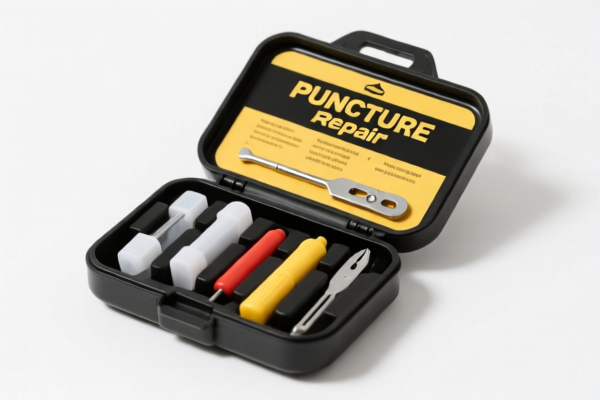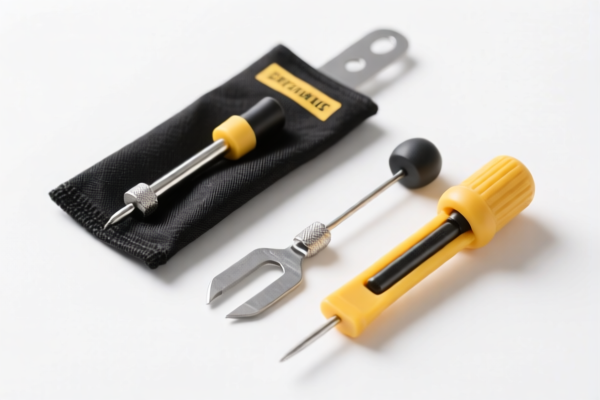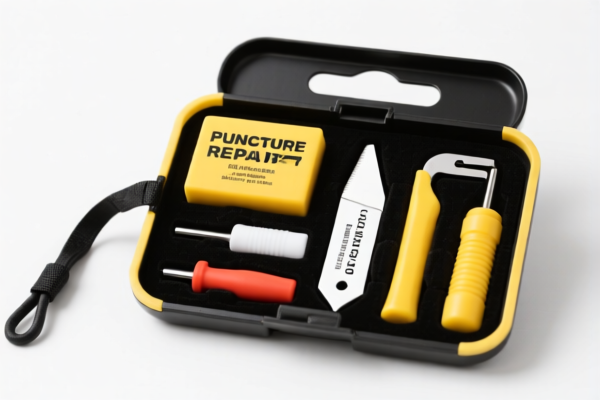| HS Code | Official Doc | Tariff Rate | Origin | Destination | Effective Date |
|---|---|---|---|---|---|
| 4205001000 | Doc | 55.0% | CN | US | 2025-05-12 |
| 4205000500 | Doc | 57.9% | CN | US | 2025-05-12 |
| 4201006000 | Doc | 57.8% | CN | US | 2025-05-12 |
| 8307103000 | Doc | 58.8% | CN | US | 2025-05-12 |
| 8307106000 | Doc | 58.8% | CN | US | 2025-05-12 |
| 7317006530 | Doc | 80.0% | CN | US | 2025-05-12 |
| 7317005518 | Doc | 80.0% | CN | US | 2025-05-12 |
| 8305906000 | Doc | 43.2% | CN | US | 2025-05-12 |
| 8305903050 | Doc | 30.0% | CN | US | 2025-05-12 |
| 7415100000 | Doc | 57.5% | CN | US | 2025-05-12 |
| 7415390000 | Doc | 58.0% | CN | US | 2025-05-12 |
| 4803002000 | Doc | 55.0% | CN | US | 2025-05-12 |
| 4803004000 | Doc | 55.0% | CN | US | 2025-05-12 |




Puncture Repair Kit
A puncture repair kit is a self-contained set of tools and materials used to temporarily seal punctures in pneumatic tires. These kits allow for roadside or field repair of tires without the need for complete removal and patching, offering a convenient solution to flats.
Materials
Typical kits include the following components:
- Reamers/Rasps: Used to clean and roughen the inside of the puncture hole, preparing it for the plug.
- Plug Strips: Self-adhesive rubber strips that are inserted into the puncture hole to seal it. These are often pre-glued.
- Insertion Tool/Plugger: A tool with a split eye used to thread the plug strip through the reamed hole. Often resembles a large needle with a handle.
- Knife/Razor Blade: Used to trim excess plug material after insertion.
- Glue/Cement (Optional): Some kits include a small bottle of rubber cement to enhance the seal, particularly for larger punctures.
- Air Pump/Inflator (Optional): May be included to re-inflate the tire after repair.
- Instructions: A guide detailing the repair process.
Purpose
The primary purpose of a puncture repair kit is to provide a temporary fix for tire punctures, enabling the vehicle to be driven to a repair shop for a permanent solution. It is not a substitute for a professional repair or tire replacement.
Function
The kit functions by inserting a rubber plug into the hole created by the puncturing object. The plug expands within the tire to create a seal, preventing air leakage. The adhesive on the plug, combined with the pressure of the inflated tire, helps to maintain the seal.
Usage Scenarios
- Roadside Emergencies: The most common application, allowing drivers to address flats away from repair facilities.
- Off-Roading/Overlanding: Essential for vehicles traveling in remote areas where immediate repair access is limited.
- Motorcycles/Bicycles: Smaller kits are available specifically for these vehicles.
- Emergency Vehicle/Fleet Maintenance: Used for quick repairs to maintain operational status.
Common Types
- Plug & Seal Kits: These kits utilize both a plug and a sealant injected into the tire. The sealant helps to locate the puncture and further enhance the seal.
- Strip Kits: Rely solely on rubber strips inserted with the insertion tool.
- Mushroom Plug Kits: Utilize mushroom-shaped plugs, considered more durable and effective for larger punctures.
- T-Handle Kits: Feature a T-shaped handle for easier insertion of the plug.
- Motorcycle Specific Kits: Compact kits designed for tubeless motorcycle tires, often including specialized tools.
Limitations
- Puncture Size: Kits are generally effective for punctures up to approximately 6mm (1/4 inch) in diameter. Larger punctures may not be repairable.
- Puncture Location: Repairs are not recommended for punctures in the sidewall of the tire.
- Temporary Fix: The repair is temporary and requires a professional inspection and permanent repair or tire replacement.
- Speed Restriction: Vehicles repaired with a kit typically have a speed restriction (e.g., 50 mph/80 km/h) until a permanent repair is completed.
Based on the provided information, identifying the precise HS code for a "puncture repair kit" requires careful consideration of its components and intended use. The following HS codes may be relevant:
- 7317.00.65.30: Nails, tacks, drawing pins, corrugated nails, staples (other than those of heading 8305) and similar articles, of iron or steel, whether or not with heads of other material, but excluding such articles with heads of copper: Other: Of one piece construction: Other Cut. This code applies to iron or steel articles used for fastening, potentially including components within the repair kit. The total tax rate is 80.0%, comprising a 0.0% base tariff and a 25.0%加征关税, increasing to 30.0% after 2025.4.2, with an additional 25%加征关税 for steel and aluminum products.
- 7317.00.55.18: Nails, tacks, drawing pins, staples (other than those of heading 8305) and similar articles, of iron or steel, whether or not with heads of other material, but excluding such articles with heads of copper: Other: Of one piece construction: Made of round wire Collated nails: Other: Other. Similar to the previous code, this applies to iron or steel fasteners, potentially relevant if the kit contains collated nails. The total tax rate is 80.0%, with the same tariff structure as 7317.00.65.30.
- 8305.90.60.00: Fittings for looseleaf binders or files, letter clips, letter corners, paper clips, indexing tags and similar office articles, and parts thereof, of base metal; staples in strips (for example, for offices, upholstery, packaging), of base metal: Other, including parts: Other. If the kit includes clips or staples, this code may be applicable. The total tax rate is 43.2%, consisting of a 5.7% base tariff, a 7.5%加征关税, and a 30.0%加征关税 after 2025.4.2.
Regarding HS code 7317.00.65.30 and 7317.00.55.18, please note the need to verify the material (steel or aluminum) and may require additional 25%加征关税.
Customer Reviews
No reviews yet.